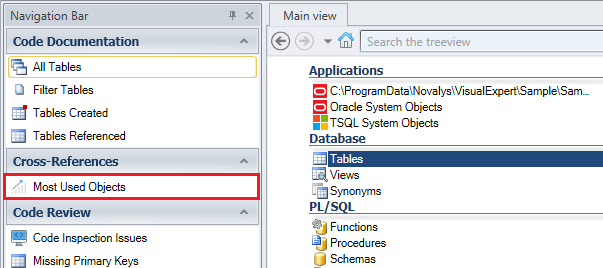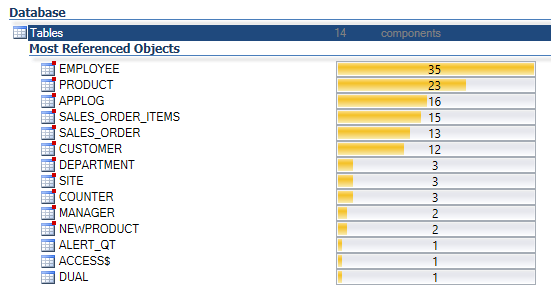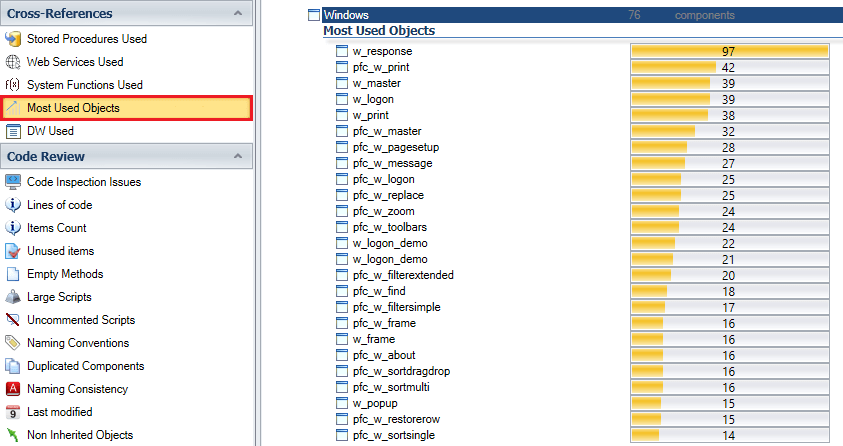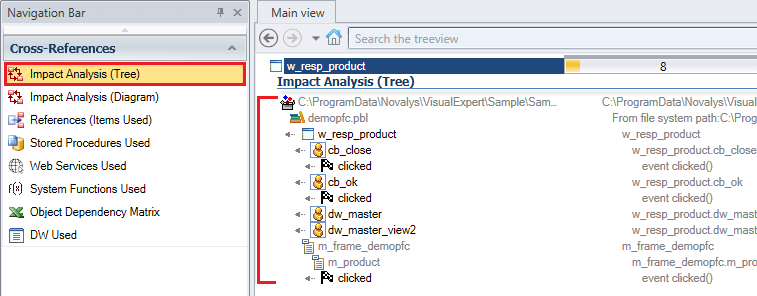Visual Expert detects all kinds of dependencies for different objects while analyzing your code.
You can find the total number of dependencies with the macro - Most Used Objects.
It is working with tables, procedures, views, user objects, and synonyms.
For PowerBuilder projects, it is also available for windows, user objects, DataWindows, and menus.
For example, you can find the most frequently referenced tables:
Visual Expert will count the references to each table, whether it’s a query embedded in the code, a view built on top of it, or a trigger. Tables will be sorted by number of dependencies, with most referenced tables coming first.
How to Find the Most Referenced Objects in your Code?
- In the treeview, select the root icon for the tables. In the navigation bar, click on [Most Used Objects]

- The number of dependencies will be displayed beside each Table.

The above example shows that the “DEPARTMENT” table has been referenced 3 times. - You can go further and display a detailed list of all references to any table:
Select a table from the result, and click on [Impact Analysis] in the navigation bar.

- You can limit the number of tables displayed in the list using the small wrench on the right.

In this example, Visual Expert will display the top 5 referenced tables.
You can also display the most frequently used PowerBuilder objects:
- For instance, select the root of the windows and click on [Most Used Objects].
The result will display a number of dependencies for each window.

- Select a window and click on [Impact Analysis] to list all dependencies to this window.

The above example shows that there are 8 references to the window “w_resp_product”.
SEE ALSO:
- Largest Table by Row Count
- Largest Tables by Volume of Data
- Objects Most Frequently Executed
- Improve the Performance of your DB Code
